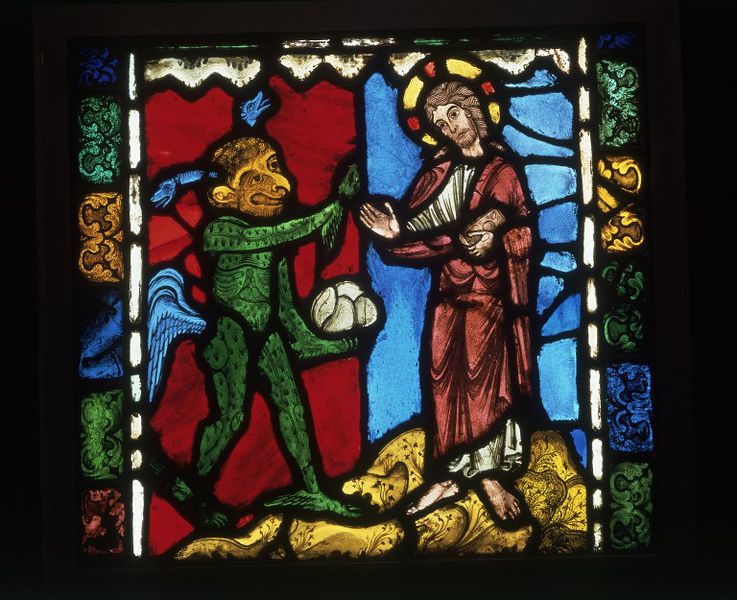I want to talk about symbolism, and how certain symbols have negative meanings and how that can change with artists.
The french medieval stained-glass artwork "Temptation in the Wilderness" that we looked at in class today uses symbolism that was probably more noticeable when it was made than it is today.

First of all, I think this piece of artwork is great. It portrays a specific exchange of words between the devil and Jesus while Jesus was in the wilderness. At first, I could not tell what Jesus was holding. It looked either like a can of cream soda or a dollar bill at first glance. When I asked my Bible-major floor-mate what he thought it was, he said it was the Bible (or the Torah, to be exact). It was so obvious. Satan was telling Jesus to make the stones into bread, but Jesus responds:
That was a tangent. Back to symbolism. The devil in this artwork is Hermes, if you look closely. His feet are winged. He has two snakes. Paganism was representative of the devil. Anything from Greek mythology had completely negative connotations in the church.
The french medieval stained-glass artwork "Temptation in the Wilderness" that we looked at in class today uses symbolism that was probably more noticeable when it was made than it is today.

First of all, I think this piece of artwork is great. It portrays a specific exchange of words between the devil and Jesus while Jesus was in the wilderness. At first, I could not tell what Jesus was holding. It looked either like a can of cream soda or a dollar bill at first glance. When I asked my Bible-major floor-mate what he thought it was, he said it was the Bible (or the Torah, to be exact). It was so obvious. Satan was telling Jesus to make the stones into bread, but Jesus responds:
“It is written: ‘Man shall not live on bread alone, but on every word that comes from the mouth of God.’” (Matthew 4:4)
That was a tangent. Back to symbolism. The devil in this artwork is Hermes, if you look closely. His feet are winged. He has two snakes. Paganism was representative of the devil. Anything from Greek mythology had completely negative connotations in the church.

You can tell that symbols can change through the works of artists. C.S. Lewis portrayed fauns in Narnia as good characters. Wow, talk about changing the world. Suddenly Narnia-reading Christians no longer look at fauns and minotaurs and relate it to the devil and everything bad. How cool would it be to change the world, even if it is in the slightest way?
No comments:
Post a Comment